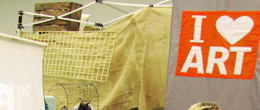











As cultural anthropologists, we watch and listen carefully. We are living in a time of massive change, and identifying and decoding these indicators gives us trenchant insights into where our culture is headed.
What people call “sustainability” or “going green” is not just a fad or a trend. And it’s not just about business and getting people to buy more “green” stuff. It’s a seismic, if sometimes invisible, shift in sensibilities that is making its way into every element of our lives. This shift is radical at its core — it represents a questioning of a lot of things that mainstream culture holds dear — but it can appear rather traditional, in some unexpected ways.
We are in a phase of human history when we are reclaiming our evolutionary heritage, reconnecting with the animals that we are.
In order to understand where culture is going, and what the “conscious consumer” craves, we need to look to the fringes and the earliest adopters, because these bleeding-edge practices give us clues about people’s aspirations and deepest yearnings. The conscious consumer is at the vanguard of culture change, but because these indicators can become mainstream so quickly, deciphering them helps us see what’s ahead, where things are going, and how to help our clients reflect this sensibility.